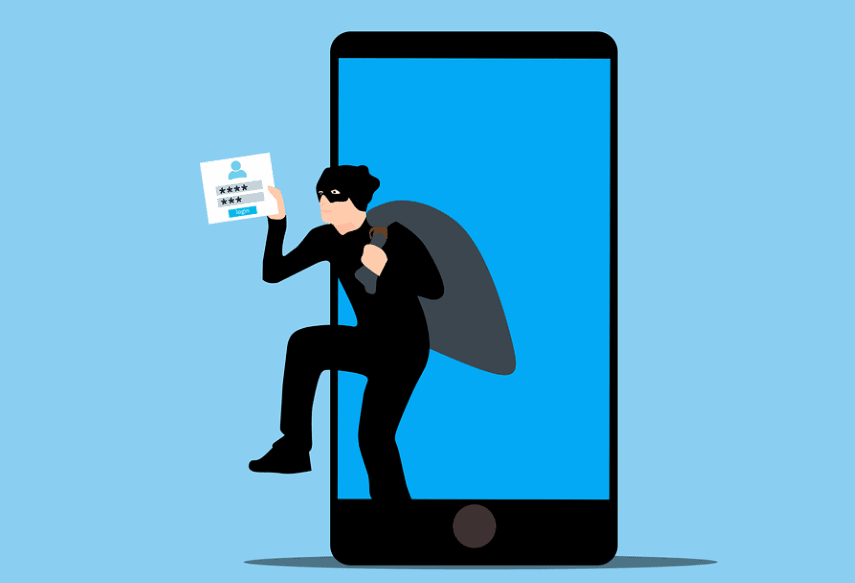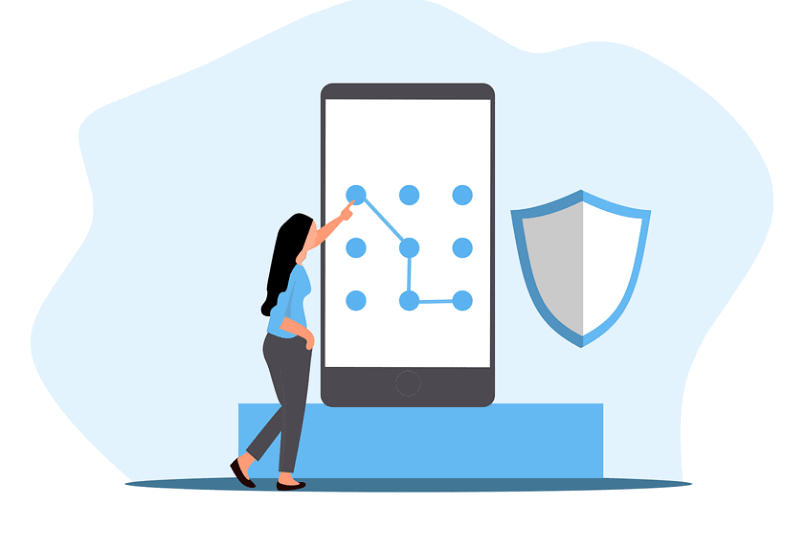We are living in an increasingly digital world, which has made it easier for cyberstalkers to pursue and harass their victims.
Cyberstalking is a form of online harassment that can take many forms, including unwanted advances, threats of violence, or the publication of personal information.
How to Protect Yourself Against Cyberstalking In 2024
It’s important to stay one step ahead of cyberstalkers by taking proactive measures to protect yourself from their malicious behavior.
What is Cyberstalking?

Cyberstalking is the use of technology, such as computers and smartphones, to harass someone online.
It could involve posting threatening messages on social media accounts or sending emails with threats or harassment.
It could also include hacking into someone’s computer without their permission in order to access personal information or send malicious programs.
Cyberstalkers may also use GPS tracking devices to follow or monitor their victims.
The Consequences of Cyberstalking
Cyberstalking can have long-term psychological effects on its victims. They may suffer from depression, anxiety, insomnia, and even PTSD due to the constant harassment they receive from their stalker.
Victims may also feel isolated and ashamed because of the humiliation they experience from cyberstalking.
In some cases, cyberstalkers have been known to make false accusations against their victims in an effort to damage their reputation or cause them financial harm.
How You Can Protect Yourself From Cyber stalkers?
The best way to protect yourself from cyberstalkers is by being aware of your online activity and monitoring it closely.
Make sure you keep your personal information secure by using strong passwords that are difficult for others to guess.
Avoid sharing too much personal information online; don’t post your contact details publicly and only share them with people you trust.
If you experience any signs of cyberstalking – such as receiving threatening emails or messages – report it immediately so that law enforcement can take action against the perpetrator.
Let us discuss in detail the points tha you need to keep in mind to protect yourself and your loved ones from cyberstalking
Recognize the Signs of Cyberstalking
One of the best ways to protect yourself from cyberstalkers is to recognize the warning signs.
This includes receiving numerous emails from a single sender, having someone constantly post on your social media accounts, or being sent threatening messages.
If you notice any of these signs, it is important to take action immediately.
Keep Your Personal Information Private

One of the best ways to protect yourself against cyberstalking is to keep your personal information private.
This includes your home address, phone number, email address, and social media accounts.
Only share this information with people you trust and be sure to use privacy settings to limit who can see your personal information online.
Don’t Respond to Threatening or harassing Messages
If you receive a threatening or harassing message from someone, it is important not to respond. Responding will only encourage the stalker and could make the situation worse.
If you feel like you are in danger, save the messages and report them to the police.
Block the Stalker Online
If you are being cyberstalked, one of the best things you can do is block the stalker online. This will prevent them from seeing your posts and messaging you.
Most social media platforms have blocking features that you can use to protect yourself against cyberstalkers.
Report Suspicious Activity to the Police
If you notice any suspicious activity online, such as someone trying to access your personal information or repeatedly sending you messages, be sure to report it to the police. Cyberstalking is a crime and should be taken seriously.
Keep a Record of Everything
If you are being cyberstalked, it is important to keep a record of everything that is happening.
This includes saving all threatening or harassing messages, as well as any other evidence that may be helpful in identifying the stalker.
Keeping a record will also be helpful if you decide to take legal action against the stalker.
Tell Your Friends and Family What’s Going On
If you are being cyberstalked, it is important to tell your friends and family what is going on. They can provide support and help you watch for any suspicious activity online.
Additionally, they can be a valuable resource if you need to take legal action against the stalker.
Get a Restraining Order If Necessary
In some cases, cyberstalking can escalate to physical stalking or harassment. If this happens, it may be necessary to get a restraining order against the stalker.
A restraining order is a legal order that prohibits the stalker from contacting or coming near you. If the stalker violates the restraining order, they can be arrested and charged with a crime
Change Your Online Passwords Regularly

Another way to protect yourself against cyberstalking is to change your online passwords on a regular basis.
This will make it more difficult for the stalker to access your accounts and will help to keep your personal information private.
Be sure to choose strong passwords that cannot be easily guessed by someone who knows you well.
Avoid Posting Personal Information Online
You should also avoid posting personal information online, such as your home address or phone number.
If you must post this type of information, be sure to use a pseudonym rather than your real name.
You should also avoid posting photos that reveal personal information, such as photos that show your home address or license plate number
Engage with Support Groups
It can be helpful to engage with support groups when dealing with cyberstalking as they can provide valuable advice and resources that can help you stay safe online.
There are a variety of different support groups available depending on where you live, so it’s worth doing some research and finding one that works best for you.
Additionally, many organizations offer free legal advice if needed which can be very useful when dealing with cyberstalkers.
Report Cyberstalking Activity Immediately
If you believe you are being cyberstalked it is important to report the activity immediately. Contact law enforcement and request an investigation into the matter as soon as possible.
Additionally, if you feel threatened in any way it is important to seek legal advice from an attorney who specializes in cybercrimes.
This will help ensure that your rights are protected and that appropriate action can be taken against the perpetrator of the crime.
Cyberstalking: How to File a Report
Important: Contact the authorities if your stalker makes threats against you or your loved ones or if they attempt to establish direct contact with you, whether in person or over the phone. The authorities in your area should be contacted for assistance in locating and identifying your stalker.
As a result of common misunderstandings, cases of cyberstalking are frequently not reported. Keep in mind that cyberstalking is illegal in many countries. Cyberstalking could be addressed in a number of ways.
Report to Local Police Force
They might be able to provide you more advice or point you in the direction of a local cybersecurity agency that deals with the type of crime you’ve committed.
If you live in the United States, you can also file a complaint with the FBI’s Internet Crime Complaint Center (IC3).
To report incidents of cyberstalking and other forms of online harassment, please visit the Internet Crime Complaint Center (IC3).
Supplier to the Stalker
Due to the prevalence of cyberstalking via email, it is important to notify your provider if you experience this. If your cyberbully is using Gmail, for instance, you can file a complaint with Google.
There are a number of resources online that aim to help victims of cyberstalking and provide information about this crime. For instance, one excellent collection of resources is provided by the title Fighting Cyberstalking.
Learn to Recognize Other Forms of Digital Abuse
Cyberstalking is widely regarded as among the most intrusive and distressing examples of cyberviolence. But it’s hardly the only sort of digital mistreatment.
In online, violence can take many forms, each with its own unique dangers.
Trolling
Trolls use threatening and harassing online comments to target their victims.
Keyboard armies are known to be funded by several countries throughout the world in order to spread propaganda and influence political decision-making.
Phishing Scams

Phishing scams are a form of digital fraud where an abuser tries to gain access to sensitive information—such as bank account details—by pretending to be someone else.
These scams often target vulnerable people such as elderly people, young adults, and those with limited computer literacy.
The scammer may try to lure their victim into providing them with personal information such as passwords or credit card numbers by offering fake rewards or discounts.
If successful, the scammer will have access to the victim’s financial accounts and may drain funds or purchase goods with stolen credit cards.
Identity Theft
Identity theft is another form of digital abuse where an abuser uses a victim’s personal information—such as Social Security numbers and driver’s license numbers—to open up accounts in the victim’s name without their knowledge or permission.
This type of crime can cause long-term damage if not addressed quickly since it can take months (or even years) for victims to repair their credit score after identity theft occurs.
Additionally, identity theft can lead to further forms of abuse such as harassment from collection agencies trying to recover stolen funds from the victim’s accounts.
Sexual assault and harassment in the digital space
Intimate image and remark abuse is a common tactic used by sexual predators who use various online venues, including dating apps, forums, and social media.
In extreme cases, this kind of behaviour might lead to cyberstalking or even murder.
Doxing
Hackers compromise victims’ devices to steal and distribute sensitive information. The intended result is a loss of confidence in the safety of the targets, leading to either defensiveness or repression.
Swatting
This criminal behaviour illustrates how online abuse may translate into the real world. It is common practise for criminals to circulate fake information in order to lure emergency personnel to a victim’s home
Quick Links:
- Blog Marketing Scams
- The Internet
- How to Prevent Click Fraud in Easy Steps
- OpenDNS vs Google DNS
- Why Its Important To Stay Current With Antivirus Definitions
- Internet Security Issues
- What Is VoIP Security?
- ExpressVPN vs TunnelBear
- Best Private Browser Android
- What Anti-Virus Software Consists Of?
Conclusion: How to Protect Yourself Against Cyberstalking In 2024
Cyberstalking is a real issue that should not be taken lightly—but it’s also something that can be managed with the right precautions in place.
By protecting your personal information and being cautious about what you share online, you can reduce your chances of becoming the target of a cyberstalker.
If necessary, don’t hesitate to reach out for help; there are numerous organizations out there dedicated to providing support and assistance in these situations. Take control of your safety today!


